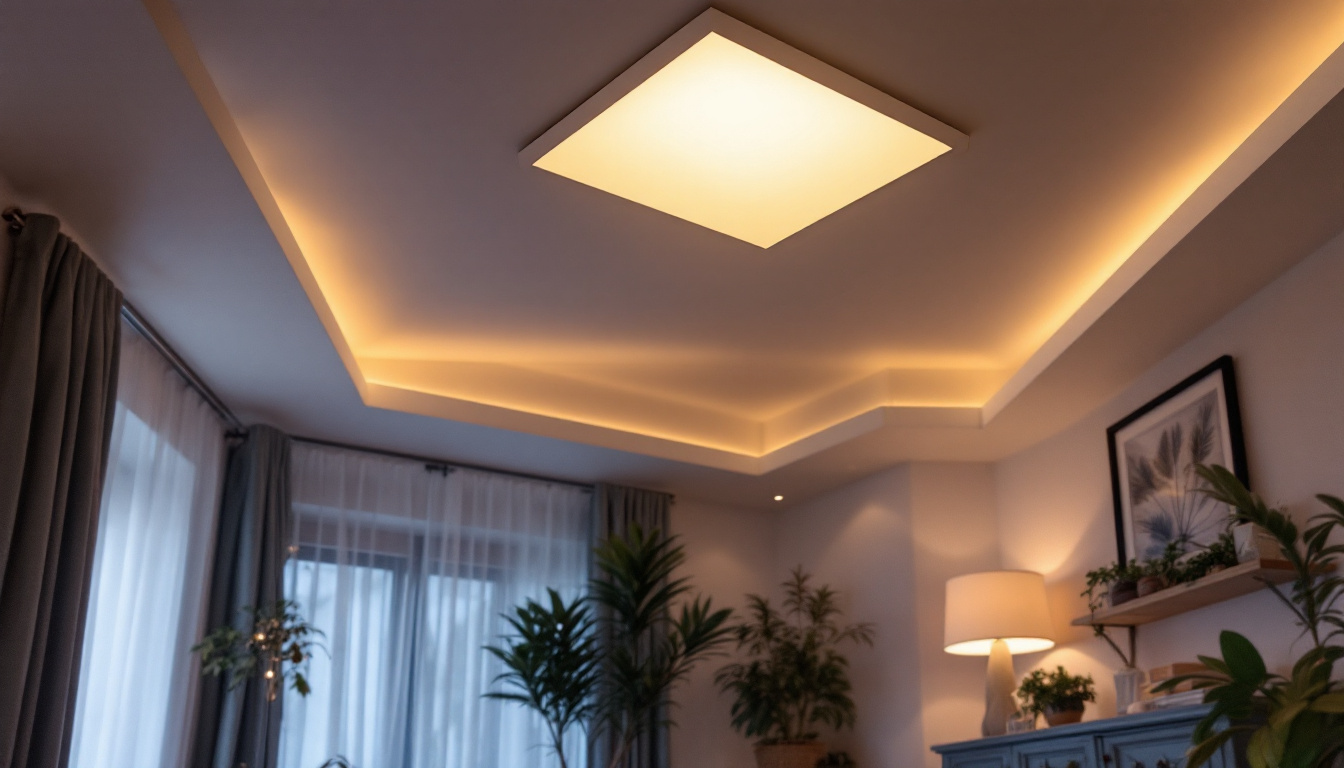
In the ever-evolving world of lighting design and installation, LED technology has emerged as a game changer. For lighting contractors, understanding the best practices associated with LED can lights is crucial for delivering high-quality installations that meet client expectations and regulatory standards. This article delves into the best practices for using can light LEDs, focusing on installation techniques, energy efficiency, and design considerations.
LEDs, or Light Emitting Diodes, are solid-state lighting devices that are known for their energy efficiency and longevity. Unlike traditional incandescent bulbs, which generate light through heat, LEDs produce light through electroluminescence. This fundamental difference not only makes LEDs more efficient but also allows for a variety of applications in residential and commercial settings. The compact size of LEDs also enables innovative designs and installations that were previously not feasible with larger light sources, opening up new possibilities for architects and designers alike.
One of the primary advantages of LED can lights is their energy efficiency. They consume significantly less power compared to incandescent or fluorescent lights, which translates to lower electricity bills for clients. Additionally, LEDs have a longer lifespan, often lasting up to 25,000 hours or more, reducing the frequency of replacements. This longevity not only saves money but also minimizes waste, making LEDs a more environmentally friendly option. Furthermore, many LED can lights are designed with dimmable features, allowing users to adjust brightness levels according to their needs, further enhancing energy savings.
Moreover, LED can lights are available in various color temperatures, allowing for greater flexibility in design. Whether a warm, inviting glow is desired for a living room or a cooler, more focused light for a workspace, LEDs can accommodate these needs with ease. The ability to choose from a range of color temperatures means that homeowners and businesses can create the perfect ambiance for any occasion, from cozy family gatherings to professional meetings. Additionally, the instant-on capability of LEDs eliminates the warm-up time associated with some fluorescent lights, providing immediate illumination when needed.
LED can lights are versatile and can be used in a variety of settings. In residential spaces, they are often installed in ceilings to provide ambient lighting, accent lighting, or task lighting. In commercial environments, they can enhance the aesthetic appeal of retail spaces or provide functional lighting in offices and warehouses. Their low profile and sleek design make them ideal for recessed installations, allowing for a clean and modern look that complements contemporary interiors.
Understanding the specific application of LED can lights is essential for contractors. Each setting may require different specifications in terms of brightness, color temperature, and beam angle, making it imperative to tailor installations to meet the unique needs of each project. Additionally, the integration of smart technology into LED can lights has revolutionized their use, allowing for remote control and automation through smartphones or home automation systems. This capability not only enhances convenience but also enables users to optimize their lighting based on their daily routines and preferences, further demonstrating the adaptability and innovation of LED technology in modern lighting solutions.
Proper installation of LED can lights is critical to achieving optimal performance and longevity. Lighting contractors should adhere to several best practices to ensure that installations are safe, efficient, and aesthetically pleasing.
When selecting LED can lights, it is essential to consider the fixture’s compatibility with the intended application. Factors such as the size of the can, the type of trim, and the wattage should all be taken into account. For instance, using a high-wattage LED in a small can may lead to overheating and reduced lifespan.
Additionally, contractors should ensure that the fixtures are rated for the specific environment in which they will be installed. Wet-rated fixtures are necessary for outdoor use, while damp-rated fixtures are suitable for areas like bathrooms or kitchens where moisture is present. It’s also worth noting that some fixtures come with integrated smart technology, allowing for enhanced control over lighting settings, which can be particularly beneficial in modern homes where energy efficiency and convenience are priorities.
Wiring is a critical aspect of LED can light installation. Contractors must follow local electrical codes and regulations to ensure safety and compliance. Using the right gauge wire and ensuring secure connections can prevent issues such as flickering lights or short circuits.
Furthermore, it is advisable to use dimmable LED drivers when installing fixtures that will be controlled by dimmer switches. Not all LEDs are compatible with dimming, so selecting the appropriate driver is essential to avoid performance problems. In addition, incorporating junction boxes and ensuring that all wiring is neatly organized can enhance both the safety and the aesthetic appeal of the installation, making maintenance easier in the future.
Strategic placement of can lights can significantly impact the overall lighting effect in a space. Contractors should consider the room’s layout, purpose, and existing light sources when determining the placement of fixtures. A common guideline is to space can lights approximately 4 to 6 feet apart for optimal coverage.
Moreover, the height of the ceiling should also influence placement decisions. Higher ceilings may require more powerful fixtures or closer spacing to achieve the desired brightness and ambiance. Additionally, it can be beneficial to use a lighting design software or app to visualize the placement before installation, allowing contractors to experiment with different configurations and ensure that the final result meets the client’s expectations. Incorporating layers of light—such as ambient, task, and accent lighting—can also enhance the overall aesthetic, creating a more inviting and functional space.
Energy efficiency is a primary selling point of LED technology, and contractors should emphasize this aspect to clients. By understanding energy-saving practices, contractors can not only enhance the value of their services but also contribute to sustainability efforts.
Integrating smart controls with LED can lights can significantly enhance energy efficiency. Smart dimmers, timers, and motion sensors allow for greater control over lighting usage, reducing energy consumption when spaces are unoccupied. Contractors should be familiar with various smart control systems and how they can be integrated into LED installations.
Educating clients about the benefits of these technologies can lead to more informed decisions and increased satisfaction with the final installation.
Daylight harvesting is another effective strategy for maximizing energy efficiency. By utilizing natural light during the day, contractors can reduce reliance on artificial lighting. This can be achieved through the strategic placement of can lights and the use of dimmable fixtures that adjust based on available daylight.
Incorporating daylight sensors can automate this process, ensuring that artificial lighting is only used when necessary. This not only saves energy but also creates a more pleasant and dynamic lighting environment.
When it comes to lighting design, aesthetics play a crucial role. Contractors must consider how LED can lights will complement the overall design of a space while fulfilling functional requirements.
Choosing the right color temperature is vital for creating the desired mood in a space. Warm white (2700K-3000K) is often preferred for residential settings, as it creates a cozy and inviting atmosphere. In contrast, cooler temperatures (4000K-5000K) are more suitable for workspaces, promoting focus and productivity.
Contractors should discuss color temperature options with clients, helping them to visualize how different temperatures will affect the overall ambiance of their space.
The trim and finish of can lights can significantly impact the visual appeal of the installation. Various options are available, including baffle, reflector, and adjustable trims, each offering different aesthetic and functional benefits.
Contractors should be well-versed in the various trim styles and finishes available, guiding clients toward choices that align with their design vision while ensuring optimal performance.
Even the best installations may require maintenance or troubleshooting over time. Contractors should be prepared to address common issues that may arise with LED can lights.
Flickering lights, dimming, or complete failure are common issues that may occur with LED installations. Contractors should be able to identify the root causes of these problems, which may include incompatible dimmers, poor connections, or faulty fixtures.
Providing clients with a basic understanding of potential issues can empower them to address minor problems independently, while also reinforcing the contractor’s expertise in the field.
Encouraging regular maintenance practices can extend the lifespan of LED can lights. This includes periodic cleaning of fixtures to remove dust and debris, which can affect light output. Additionally, contractors should recommend that clients check for any signs of wear or damage to wiring and connections.
By establishing a maintenance schedule, contractors can help clients maximize their investment in LED technology and ensure ongoing satisfaction with their lighting solutions.
As LED technology continues to advance, lighting contractors must stay informed about best practices for installation, energy efficiency, and design considerations. By adhering to these guidelines, contractors can deliver high-quality LED can light installations that meet client needs while promoting sustainability and efficiency.
Ultimately, the successful integration of LED can lights into residential and commercial spaces not only enhances the aesthetic appeal but also contributes to energy savings and environmental responsibility. By embracing these best practices, lighting contractors can position themselves as leaders in the industry, providing valuable services that meet the demands of modern lighting design.
Ready to elevate your lighting installations with the best LED can lights on the market? Look no further than LumenWholesale. Our commitment to quality and affordability ensures that you have access to spec-grade lighting products at wholesale prices that simply can’t be beaten. Say goodbye to middleman markups and hello to a vast selection of reliable, high-performance lighting that meets the highest industry standards. Plus, with free shipping on bulk orders, you can stock up on premium lighting solutions without worrying about hidden fees. Make the smart choice for your business and experience the best value in wholesale lighting today with LumenWholesale.

Discover effective strategies to train your team in the art of exterior patio lighting.

Discover how Universal Lighting Technology is revolutionizing the lighting industry for contractors.

Discover expert insights on recessed light square installations with our comprehensive guide.

Discover essential insights for lighting contractors on the benefits and applications of LED tape covers.